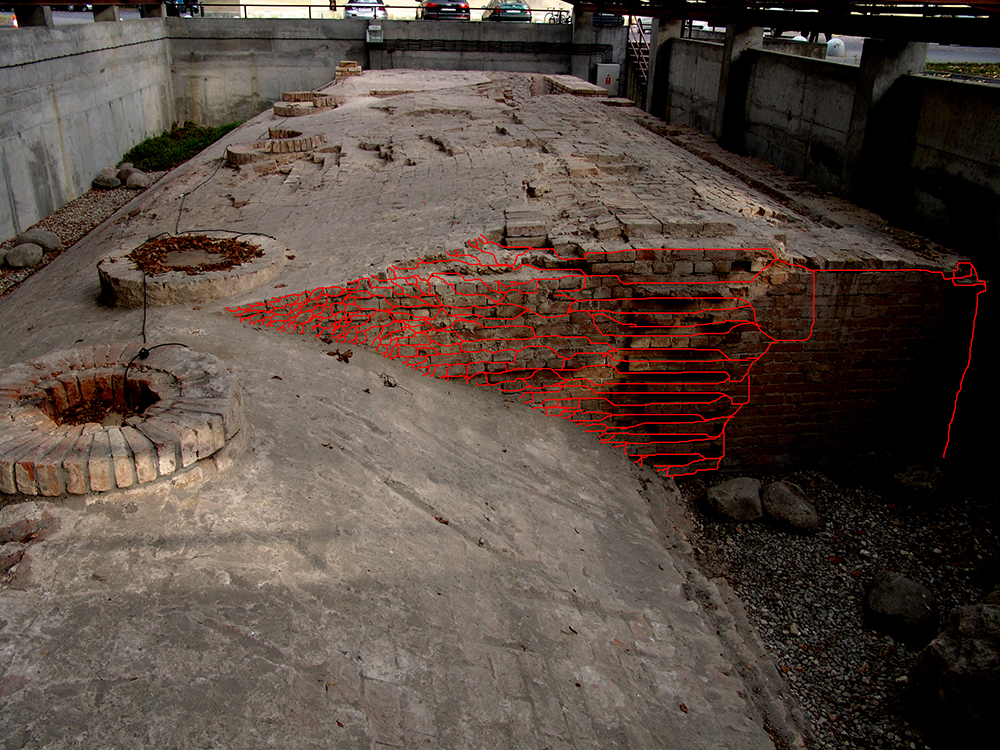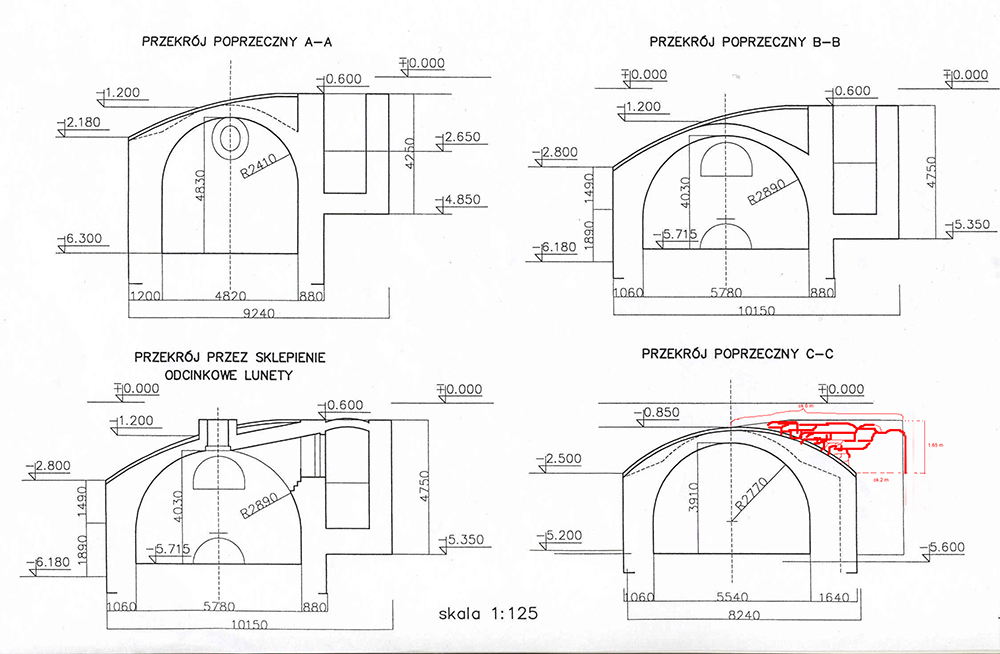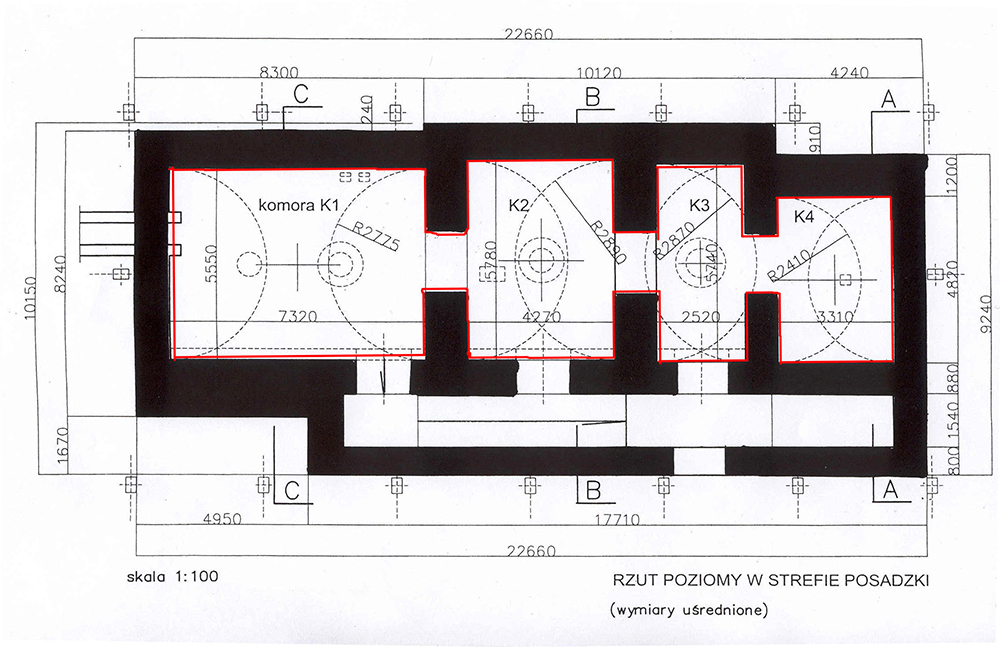18 June 2010 - 28 Aug 2010
The Capillary Phenomena, Water Tank CCA
Ujazdowski Castle, Warsaw
Curator: Grzegorz Borkowski
Project description
The light installation created by fine lines of flexible red neon rope lighting on the surface of the external and internal unique object – the Water Tank.
These lines are to imitate the blood capillary network structure, which the main function is to exchange the fluids and provide nutritional substances despite the gravity. Structures of this type occur in plants as well as animals and human organisms. Capillaries are also used in modern technologies.
The capillary network appearing on the Water Tank walls is the metaphor of awakening to life the object, which is the monument of architecture (revitalized by the acclaimed Japanese artist Tadashi Kawamata).
This monument, located below the ground level, is strictly connected with what is hidden inside and subcutaneous.
Warm red neon networks are a kind of energy transfusion since the colour is invariably associated with dynamic, vibrant warming. It is, therefore, a kind of chromotherapy – treating with colour and light.
Capillary Phenomena* are unique phenomena consisting of a symbiosis of an architectural object with a specific visual and spatial code. Capillaries are universal structures, commonly occurring in a liquid management system. Thanks to their active nature they often act against well-established forces, as in the case of water transportation in defiance of gravity. Their task is nourishment, replacement, purification, communication. They captivate by their small size and invisible character to organ-isms they function within, and, simultaneously, by their prevalence.
This structure appears in many objects and disciplines – we encounter them in plants irrigation, transportation of water within rock blocks, and a system of body fluids in all living organisms. They also have an application to the production of intelligent clothing with a membrane structure. As a result, their existence is ubiquitous and universal. Settled in botany, hydrology, mechanics or new technologies they move to a new field: art and collective imagination. Yet, capillaries serve so many life-giving functions, we come across some kind of a paradox: when one capillary breaks (for example, in a human circulatory system) it does not impact the overall organism, its functions are taken over by the remaining vessels.
* The Capillary Phenomena as a description of projects in a public space initiated by Żółcińska was created by Grzegorz Borkowski who curated The Water Tank project in The Ujazdowski Castle Centre for Contemporary Art.
Documentation
The project of the outside part of the installation:

The technical side
The Water Tank section plans with the outside capillary element marked.

The Water Tank plans with the capillary elements marked.

